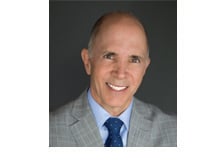Presence. The healthcare marketing and social media gurus will tell you that you can’t have enough of it. They even tell us that increasing your presence can be automated and systematized. It’s easy: Turn on the machine, get more followers,
enjoy the results of greater influence.
For healthcare practitioners, especially physicians, it’s a very seductive message. The prospect of gaining more online followers appeals to our achievement addicted, success scoring,
comparison-creating nature. These are attitudes and behaviors that were reinforced in our upbringing and training.
Don’t get me wrong. I’m in favor of you getting more Twitter, Facebook and LinkedIn followers. Practice and marketing
management companies provide a valuable service in this regard.
In the advertising world, they often say: “Nothing puts a bad product out of business faster than good advertising.” When the product is bad, good advertising drives
widespread product trial, which results in instant dissatisfaction because the product is poor, which results in negative word of mouth, which results in a rapid and irreversible collapse of the brand. The lesson is: Before you turn up the marketing,
get the product and service squared away.
That’s especially true in health care, because the product is you. While you drive more patients to your practice; if you lack the skills to authentically be present for, listen to, engage,
and motivate patients, you may fall far short of meeting their expectations, and in the process, damage your reputation.
A 2013 survey by Vanguard Communications
examined the online history of almost 2,000 physicians who received low ratings—two stars or less—on the popular rating sites Vitals.com, RateMDs.com and Yelp.com. The survey revealed that when patients are dissatisfied, the main reasons
for dissatisfaction have little to do with clinical competence or misdiagnosis. By a four to one margin, the main reasons for patient dissatisfaction were perceived physician indifference, bedside manner and customer service. When patients are dissatisfied,
the most frequent reasons relate to a lack of personal presence on the part of the doctor.
Here are some steps to enhancing your personal presence.
1. Plug the holes in your practice.
The worst part of providing
a sub-par customer experience is not that some patients take to social media to profess their regrets, it is that most don’t. Unhappy patients quietly slip away, never to return, and you don’t know why. Consider mystery shopping your practice
to identify the gaps in your service delivery. A good mystery shopper can help you improve all aspects of the patient experience: online, telephone, facilities, consultation, follow-up, billing, etc. Costs are usually quite reasonable. You can find
a list of vendors at the MSPA, the trade association representing the customer experience industry throughout North America.
2. Develop patient rapport.
Establishing rapport begins with listening. Surveys have shown that the average physician interrupts their patients within the first 20 seconds. Yet most patients are able to get their story told in a few minutes. To establish a connection, you
need to actively reflect what they have said, and validate their concerns. Try to identify the meaning behind the patient’s message. Most patients are feeling some mixture of concern, anxiety, fear, frustration, confusion, fatigue, or pain.
You can always start by reflecting one of these feelings. You don’t have to totally get it right. You get points for effort.
3. Resist the temptation to “should on” your patients.
We have been trained
to be directive, to prescribe and recommend. To create better engagement, a patient centered approach will yield better results. Try to draw the answers out of your patients with appropriate questions such as: “What do you think is going on?
Which of these approaches seems best for you? What’s most important to you? Which issues are you most ready to work on? How can I help you with that? What other support do you have to help you?” With this input in hand, you can close by
summarizing the specific actions that you and the patient have jointly agreed upon, a plan for accountability, and a commitment to support the patient in this plan.
4. Make your online presence authentic.
Most physician
bios on their sites read something like this: “Trained at ABC Medical School, specialized in XYZ, in practice for X years…” Sure, patients need to have access to this information, but you don’t want to confuse these factual
stats with the type of authenticity you need to draw patients to your practice. You must make an emotional connection online and the best way to do this is through thoughtful copy, and more importantly, video. You want to be able to set your practice
apart from your competition. At the KOL Training Academy we help physicians develop their 90 Second Story™, a narrative that maximizes each clinician’s emotional
impact and establishes a unique service proposition.
Once you have your personal presence developed in person, on camera and online, you are ready to turn on the spigots of social media with confidence, knowing that you will be able to
meet and exceed the expectations of all who come to your practice.
 | About Mark J. Tager, MD, CEO K.O.L Training Academy A dynamic and engaging presenter, his clients include healthcare companies in aesthetics, cosmeceuticals, medical devices, pharma, regenerative medicine, biotech and natural products. A veteran of more than 800 presentations, Mark shares his skills and passion to empower those who attend his trainings. He was one of the pioneers in integrative medicine in the late 1970s where he established The Institute of Preventive Medicine in Portland, Oregon and served as Director of Health Promotion for Kaiser Permanente, Oregon. He was the founding VP of Marketing who introduced the Fraxel laser to physicians worldwide, and also served as Chief Marketing Officer of Syneron. Mark has authored nine books, including Total Engagement: The Healthcare Practitioner’s Guide to Heal Yourself, Your Patients and Your Practice (With Mimi Guarneri, MD), The Art of Aesthetic Practice (with Steve Mulholland, MD) and Transforming Stress into Power. Mark attended Duke University Medical School and trained in family practice at The Oregon Health & Science University. | |




